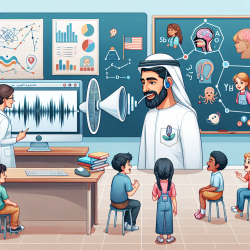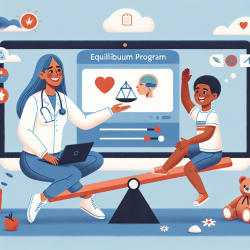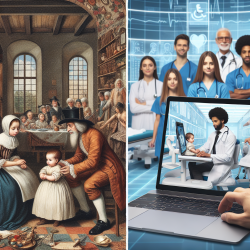Enhance Your Online Therapy Skills with Insights from Medical Education

The landscape of education is continually evolving, and this transformation extends to the realm of online therapy. TinyEYE is dedicated to providing top-notch online therapy services to schools, and we believe that staying informed about the latest educational strategies can significantly enhance our practice. A recent study titled "Online Lectures in Undergraduate Medical Education: Scoping Review" offers valuable insights that can be applied to online therapy to improve outcomes and satisfaction. Here’s how you can leverage these findings.
Understanding the Research
The study conducted a comprehensive review of how online lectures are integrated into medical education and assessed the application of multimedia design principles. The results revealed that while online lectures are well-received and improve learning outcomes, the use of multimedia design principles is not yet standard practice.
Key Multimedia Design Principles
To maximize the effectiveness of online therapy sessions, consider implementing the following multimedia design principles highlighted in the study:
- Coherence: Exclude extraneous words, pictures, and sounds.
- Pretraining: Ensure students possess prior knowledge about the main concepts.
- Spatial Contiguity: Present corresponding words and pictures in close proximity.
- Temporal Contiguity: Present corresponding words and pictures simultaneously.
- Signaling: Highlight important words.
- Redundancy: Pair animation and narration together without on-screen text.
- Voice: Use a non-accented human voice for narration.
- Personalization: Employ a conversational style instead of a formal one.
- Segmenting: Offer narrated animation in learner-paced segments.
- Modality: Pair animation and narration together instead of animation and on-screen text.
Application to Online Therapy
Integrating these principles into your online therapy sessions can make a significant difference. Here are some practical steps:
- Streamline Content: Avoid overloading sessions with unnecessary information. Focus on key therapeutic goals.
- Pre-session Preparation: Ensure students have a basic understanding of the therapy objectives before the session starts.
- Visual and Verbal Synchronization: Use visuals that align closely with your verbal instructions to reinforce learning.
- Highlight Key Points: Use visual cues to emphasize important concepts during the session.
- Interactive Segments: Break down sessions into manageable segments that allow for interaction and reflection.
Encouraging Further Research
The study emphasizes the need for more research on the application of multimedia design principles in educational settings. As practitioners, staying abreast of such research can provide new strategies to enhance our online therapy services. To read the original research paper, please follow this link:
Online Lectures in Undergraduate Medical Education: Scoping Review.
Citation: Eysenbach, G., Issa, N., Dong, C., Tang, B., Coret, A., Qureshi, A., Barron, H., Ayala, A. P., & Law, M. (2018). Online Lectures in Undergraduate Medical Education: Scoping Review. JMIR Medical Education, 4(1), e11. https://doi.org/10.2196/mededu.9091










